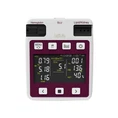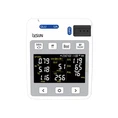|
Product name |
Benzodiazepines Rapid Test Self-Test |
||||||
|
Item type |
BZO-U101 |
||||||
|
Specimens |
Urine |
||||||
|
Packing Specification |
1 kit/ box, 5 kits / box, 25 kits/ box |
||||||
|
Size |
|
||||||
|
Shelf life |
2 year |
||||||
|
Test Time |
Waiting about 5 minutes |
||||||
|
Certificate |
CE, ISO:13485 |
||||||
|
OEM |
Acceptable |
||||||
|
Service condition |
The kit should be stored at 2-30°C |
Benzenediazepines are derivatives of 1,4-phenyldiazepines. Mainly acting on the brainstem reticular structure and the limbic system of the brain (including the amygdala, hippocampus, etc.). There are two types of neurons in the brain that can affect emotional responses and constrain each other. Noradrenergic neurons increase anxiety responses, while serotonin neurons inhibit them. Benzenediazepines can increase levels of serotonin in the brain and enhance another inhibitory neurotransmitter, γ- The role of aminobutyric acid (GABA). GABA can inhibit the action of noradrenergic neurons. Due to its low toxicity and multiple clinical uses, this type of drug has gradually replaced barbiturates and become the most widely used sedative and hypnotic medication in clinical practice.
This type of drug has a wide range of inhibitory effects on the central nervous system, producing sedative, hypnotic, and anticonvulsant effects. Generally speaking, there is no strict difference between sedation and hypnosis, and different effects often occur due to different doses. When used in small doses, it has a sedative effect, making the patient quiet and reducing or eliminating excitement, anxiety, and unease; Moderate doses can cause approximately physiological sleep; High doses can produce anticonvulsant and anesthetic effects. Long term use of this type of medication can almost always lead to tolerance and dependence. Sudden cessation of medication can cause withdrawal symptoms, so medication should be strictly controlled to avoid long-term use.


















